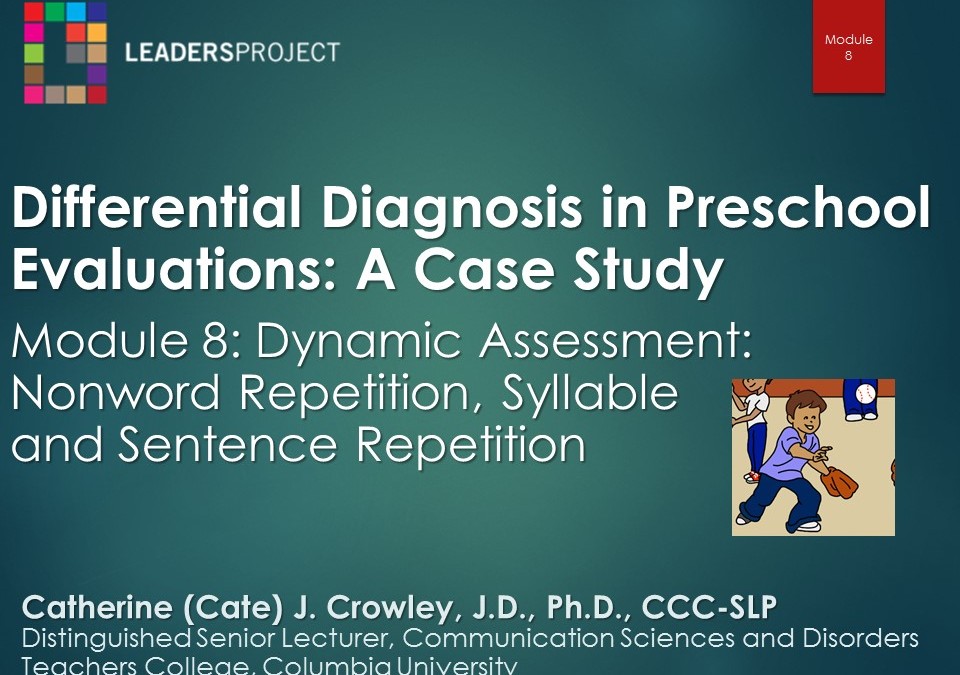
by Leaders Project | Apr 7, 2015
In this module Cate discusses using dynamic assessment using repetition of nonwords, sentences and syllables (Dollaghan & Campbell, 1998) to help confirm Alex’s diagnosis of developmental apraxia.
by Leaders Project | Jan 30, 2014
This study builds on recent evidence of the usefulness of dynamic assessment (DA) along with a mediated learning experience (MLE) and graduated prompting as a more appropriate method of determining the presence of language disorder (LD) in culturally and linguistically diverse (CLD) children.
by Leaders Project | Jan 25, 2014
The current study asked whether bilingual children would show less advantage in fast-mapping high-probability words as a result of interference from the second language (in this case Spanish) when compared to monolingual (English) children.
by Leaders Project | Dec 12, 2013
The CELF-P2 is designed to assess the presence of a language disorder or delay in Spanish speaking students and only be used to probe for information and not to identify a disorder or disability.
by Leaders Project | Dec 7, 2013
This resource, originally published in 1994, consists of reviews of tests and other measures that may be used to obtain information about the preschool child who is suspected of having an educational disability.
by Leaders Project | Dec 3, 2013
Cate Crowley and several recent graduates of the Teachers College Columbia University speech-language pathology program created and presented this poster at the ASHA convention in Chicago, 2013.
by Leaders Project | Jun 8, 2013
This module discusses how to do preschool evaluations in an accurate and appropriate manner.
by Leaders Project | Jun 7, 2013
This module explains the need to shift the clinical practice from the traditional score driven method of evaluating children for disabilities to one supported by holograms and appropriate assessment.
by Leaders Project | Jun 7, 2013
This module explains what dynamic assessment is through an example for viewers.


![[feed link]](/wp-content/plugins/rss-just-better/rss-cube.gif)